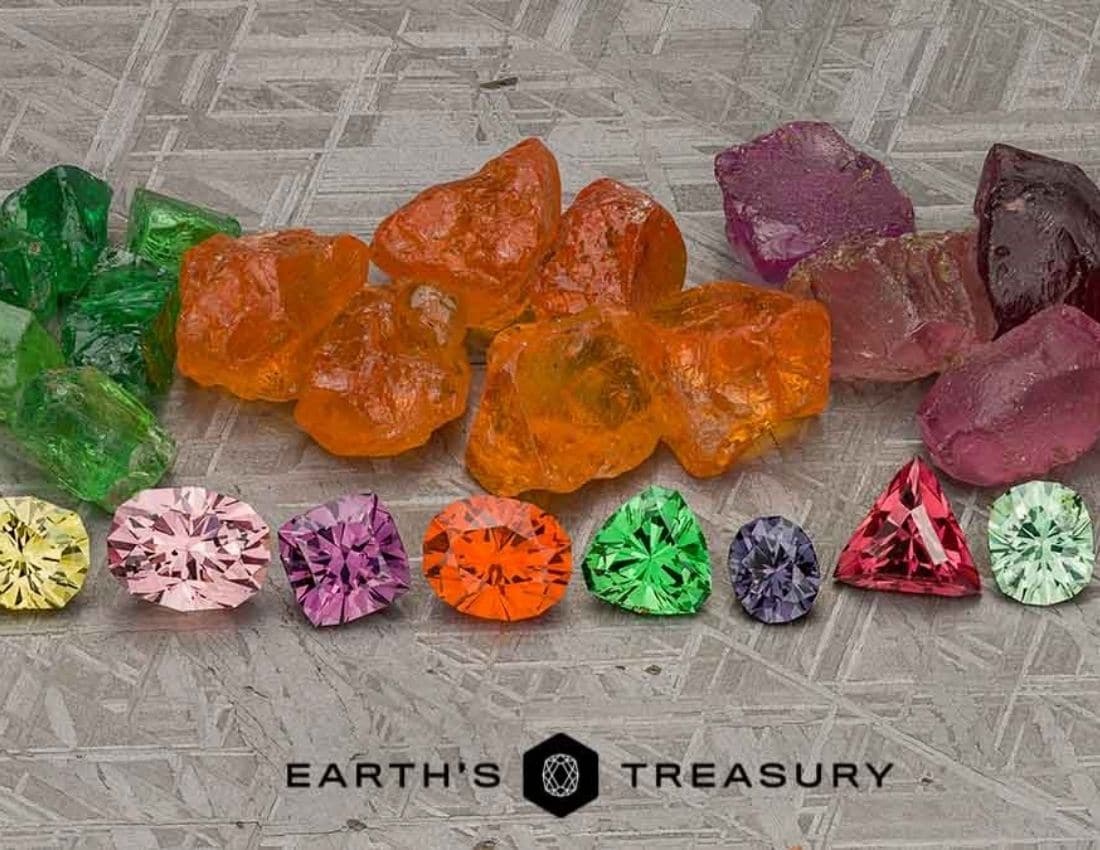Garnet
When many people think of garnet, they imagine a specific type of gem—usually red. However, garnets are not just the red stone we think them to be. They actually come in a wide variety of colors due to the trace elements contained in them. The variance does not end there; garnets are not all actually from the same species of minerals. There are quite a few different species of minerals, all with similar characteristics, that we define as garnets. Here are the different major types of garnets.
Pyrope
Pyrope garnet is best known for its intense red hues, even though it can be found in a wide range of colors—from pastel pinks and purples to even blue and purple color change gems. Bright red pyrope is the gem that most people think of when they think of a garnet. In Victorian-era Europe, they were very popular and mined in the region then known as Bohemia (now part of the present-day Czech Republic). Since then, garnets have been synonymous with the color red.
Almandine
Another popular kind of red garnet, almandine tends to be darker and often opaque. In the past, it was cut in thin slices for inlays. Pure almandine is rarely seen as a gem garnet; most gem garnets will be a mix of almandine and pyrope. A popular mix of almandine and pyrope is rhodolite garnet, which is a rich purplish-red color.
Grossular
Most people know of grossular garnets only under one common trade name: Tsavorite. First discovered in 1967 in east Africa, Tsavorite garnet is a gorgeous rich green variety of grossular colored by trace amounts of vanadium and chromium. Orangey-brown “whisky” colored grossular is often sold under the trade name Hessonite. More recently, light bluish-green grossular from Tanzania has been sold under the trade name mint garnet. Grossular can be found in a range of hues from the very rare colorless gems to yellows, oranges, browns, and the highly desirable greens.
Andradite
Andradite garnets are best known for one gem in particular—the highly prized demantoid garnet. The name demantoid means “diamond-like” because, like diamonds, andradite garnets have high dispersion, also known as “fire.” This gives them extra brilliance and sparkle. The most sought-after demantoids are intense green, and those found in mines in Russia are particularly prized and valuable.
Spessartine
Spessartine garnets are usually orange to red in color. These garnets were first found near Spessart, Bavaria, which is where the name is derived. In the early 1900s, deposits of bright orange spessartine garnet were found in California, and in more recent decades, fine orange spessartine has been found in Namibia, Nigeria, and Tanzania. Their high brilliance and intense orange hues have made them very popular, as few other gemstones exhibit this color.
One interesting fact about the different major types of gem garnets is that they are almost never 100% purely composed of just one garnet species. Most garnets are a mixture of several of the major species. The dominant species in the mix is usually used to describe the gem, but some are described by a variety of trade names. For example:
- Rhodolite Garnet: A rose-pink to purple-pink garnet composed of a mix of pyrope and almandine, and it often has trace amounts of spessartine
- Malaia or Malaya Garnet: A mixed garnet composed of predominantly spessartine with additional pyrope and almandine. They can come in a wide array of colors and are sometimes called pyralspite garnets.
- Mahenge Garnet: First discovered in 2016, this garnet is named after the Mahenge region of Tanzania where it was discovered. The finest peach-colored and light pink stones are predominantly pyrope and spessartine.
- Mali Garnet: Discovered in the 1990s in Mali, West Africa, these garnets are mix of andradite and grossular and come in a range of yellows, greens, and even browns.
Regardless of the species name or trade name, there can be no question that garnets make a fine gemstone. With such a huge range of colors to choose from, you can find a genuine garnet gemstone that you will love.


